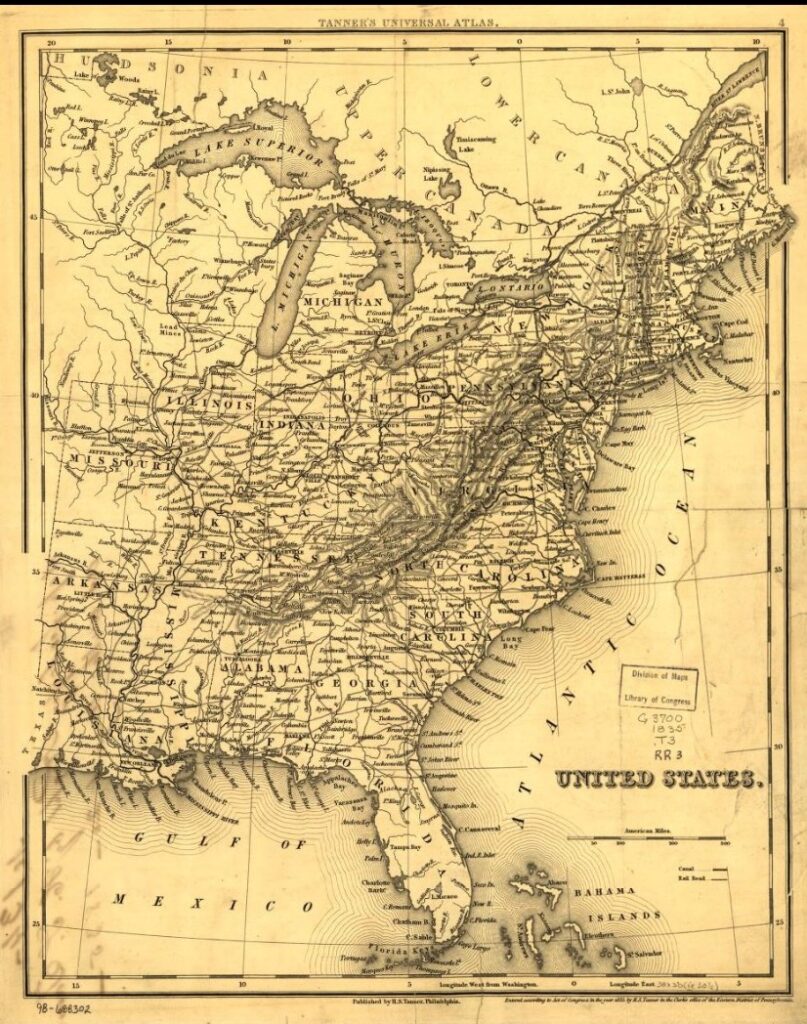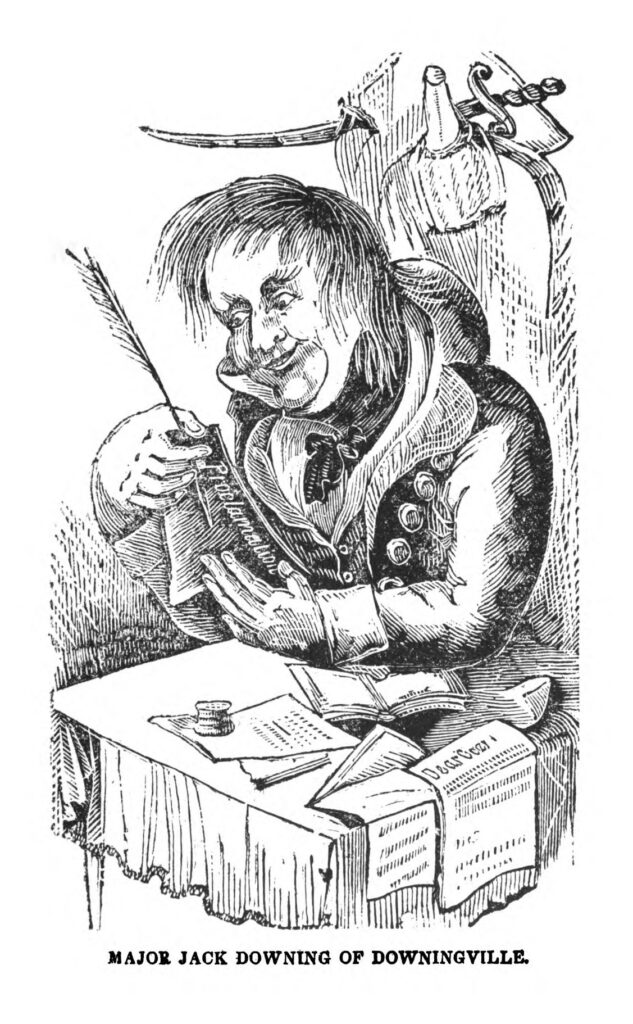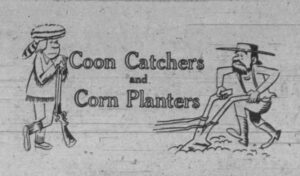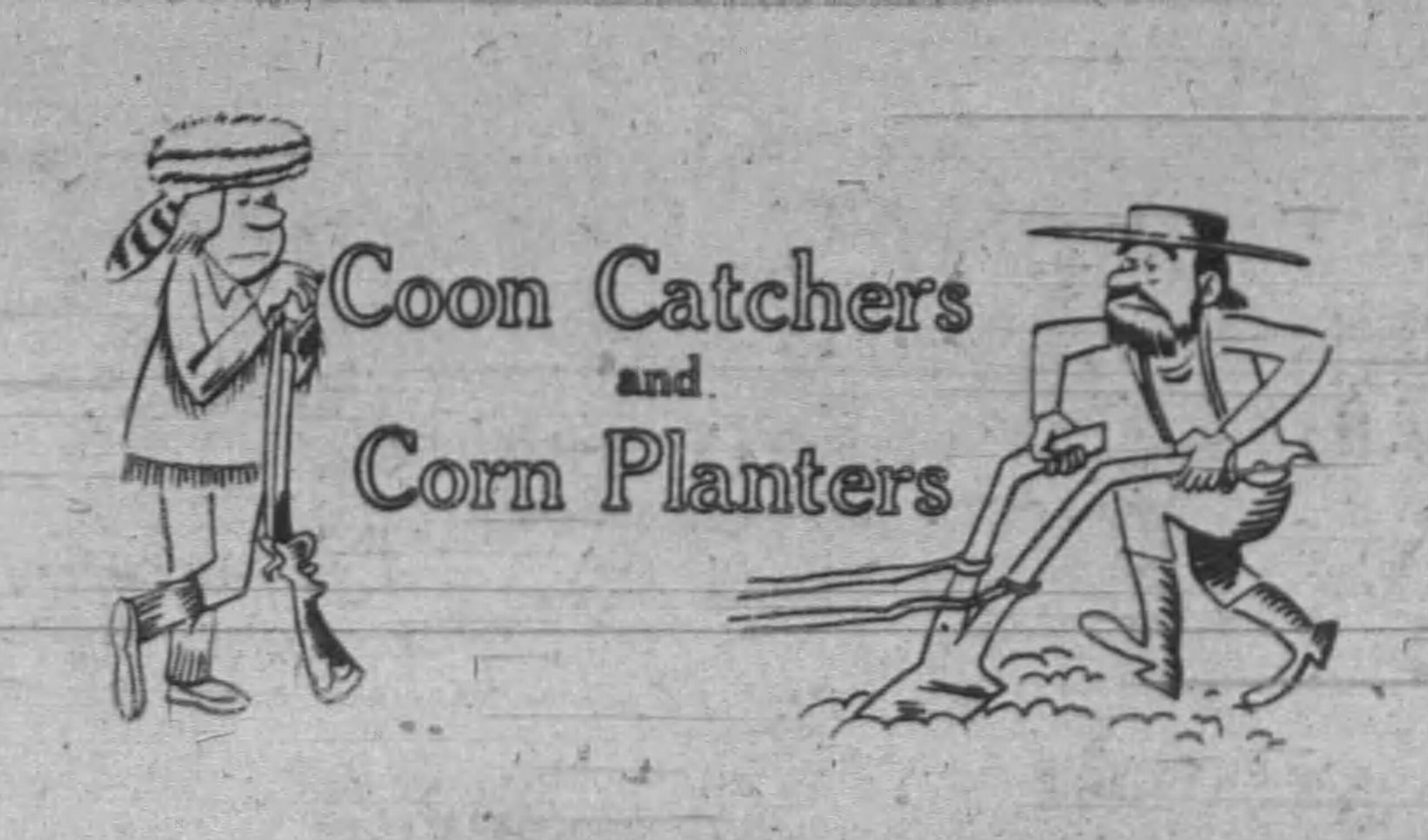By David Heighway, Hamilton County Historian
A version of this article first appeared in the June/July 2019 issue of the Hamilton County Business Magazine
It’s unpredictable what will catch the public’s attention and make a person famous (or infamous) on the internet. That actually goes farther back than you might think. During the election for Indiana state representatives in 1837, a Hamilton County writer used a turn of phrase that went international.
The newspapers of the time were looking at issues like the failure of the 1836 state transportation project, partially caused by a national financial crisis, which sent the state into bankruptcy. There were also concerns about the Seminole wars in Florida, Texas independence, and the death of King William IV of England – who was replaced by his niece, Victoria.
Then on June 1, 1837, a letter appeared in the Noblesville newspaper named, appropriately enough, The Newspaper. (Digitized copies are available online at the Hoosier State Chronicles website.) The letter was from a person calling himself “Isaac Cachel” announcing his candidacy for the state legislature. He stated that his opponents were a “priest and a lawyer” and were therefore untrustworthy. He also said that he would resolve the state financial issues by designating raccoon skins as the official currency.

The Newspaper, 5-18-1837
He stated that his qualifications for office were that, “… I believe that I was the first civilized man that skinned a coon, chased a deer, caught a bear or treed a wildcat on the west side of the White River.” This statement is what got everyone’s attention. Even at that time, it was an unusual resume for a politician.
The name was occasionally spelled “Cachell”, and there is no person by either of those names in any records from the time period. While most people used pen names in the newspapers for anonymity, much like bloggers do today, this may have been meant to be a larger-than-life fictional character. It’s been suggested that the name is a play on the word “catch-all” or the phrase “catch Hell”.

1835 US map, Library of Congress
The phrase about his qualifications and his currency proposal caught the eye of someone at The Indiana Herald, which was a paper with a state-wide readership, and it was reprinted there. The Herald report was picked up by the Bloomington Post, and it was off and running. The story appeared in Ohio, then New York, and by September, it had appeared in newspapers spread across the 26 states and various territories of the United States, as well as Canada.
“Cachel” had been writing other letters to the local paper when he apparently saw this response and decided to try to take things to the next level. In September, he put a prospectus in the paper asking for money to write a book about his adventures. The equivalent today would be something like GoFundMe. The prospectus ran for five weeks but was evidently unsuccessful.
The story was still going viral and in January 1838, it jumped the Atlantic Ocean, appearing in The Caledonian Mercury in Edinburgh, Scotland. A few days later, it was in the London Morning Post and eventually was printed in several different English, Welsh, and Scottish papers. By this time, the original name had disappeared from the various transcriptions, so the British papers gave the character a new name of “Seth W. Dobble”.
The story achieved its furthest reach in February of 1838 when it appeared in the Sydney Morning Herald in Australia. It may have also appeared in European papers, but since the original name was dropped, language differences make it difficult to track. He reignited interest in July 1838 over a ridiculously violent letter to editor of the Louisville Journal. Overall, besides five advertisements for the prospectus, there were only six actual letters, some of which are only known from transcriptions in other papers.

1834 illustration of Major Jack Downing
There might be a clue about the identity of the true author in a short piece that appeared in the Newspaper on September 7, 1837. It mentions Cachel in conjunction with “Major Jack Downing”. Downing was a fictional character created by editor Seba Smith to make humorous political commentary. That suggests that a possible writer behind Cachel may have been L. H. Emmons, the editor and publisher of the Newspaper. His paper claimed to be politically neutral, and this was one way to present opinions. It certainly created attention.
Versions of the story appeared in newspapers and magazines as late as 1858. There was a renewal of interest in Cachel in the 1970s with the county sesquicentennial and the United States bicentennial. The Indiana State Archivist surmised in 1972 that the writer may have been William Conner or some other local politician.

The Noblesville Ledger , 6-5-1978
Cachel provided the title for an excellent local history column by Georgianne Neal that ran in Noblesville Ledger between 1978 and 1980. The first letter had said that “… the coon catcher and the corn-planter …” were the “… real bone and sinner [sinew] of the country …”. Ms. Neal named her column “Coon Catchers and Corn Planters” and interviewed many elderly members of the community who have since passed away. By doing so, she created a resource that is still useful. Copies of these columns can be found at the Crossroads Discovery Center at Hamilton East Public Library.
Modern internet databases have made it possible to find all of the letters and relevant articles, which I’m not sure has been done before. While it’s unlikely the writer’s true identity will ever be known, it’s intriguing to think that one of the county’s most famous pioneers was possibly fictional.
